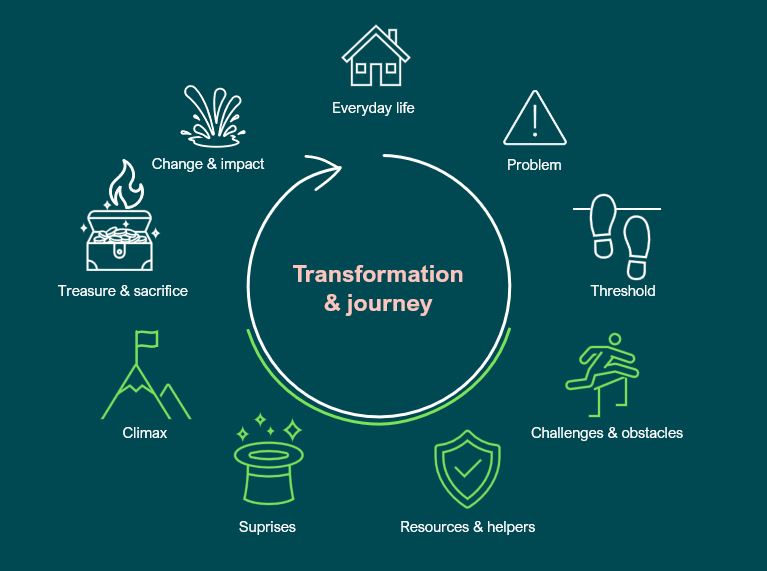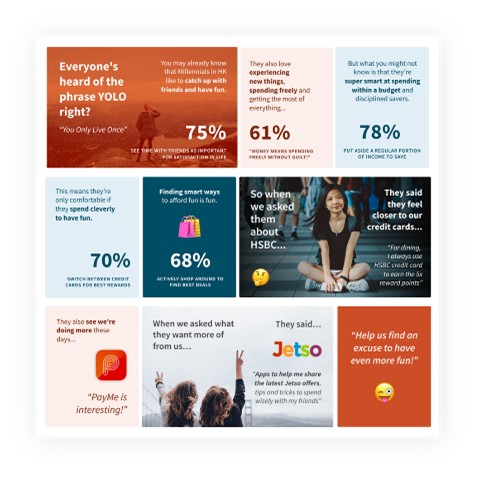Blog
To cut a long story short: storytelling, your human-centric research approach
Storytelling is a powerful technique to uncover hidden truths in your insight community and activate internal stakeholders.


Angie Deceuninck
28 June 2023
4 min read
Our brains are wired for stories. Nike, with its powerful ‘Just Do It’ slogan is a brand that masters the art of storytelling. Perhaps one of their best storytelling examples is the Dream Crazier ad, where Nike tells its customers, especially women, that ‘it’s only crazy until you do it’. The ad boosted Nike’s revenue by 31% and added $6 billion in value to the brand. This is the power of storytelling. It’s not just for showcasing results at the end of a project – it’s a powerful research technique to generate insights within insight communities.
Everyone has a story: a human-centric research approach
People are often unable to share the underlying motivations that drive their behaviour. Storytelling is an effective technique to tap into the unconscious mind. By fostering narrative-based responses you can uncover hidden truths and gain a deeper understanding of the emotional triggers that drive human behaviour. It’s a human centric approach to research – as people can express themselves and their lives best through stories.
We can switch between free and prompted storytelling to get to a 360° understanding. In free storytelling, people are encouraged to tell their story without limits. Creative techniques – like ‘write a letter to your future self’ – make it fun and engaging, leading to more in-depth, rich input. In prompted storytelling, a storytelling framework (like the one from American writer and professor of literature, Joseph Campbell) helps guide the discussion.

Take the example of mapping a car purchase journey. We could start freestyle by asking insight community members to share the purchase of their new car as a story, from first thoughts to actual purchase. In a second phase, we use the Joseph Cambell framework to explore these stories more in-depth. We probe into the problems with people’s old car (problem), elements that prevented them from buying immediately (threshold), experiences on their quest for a new car (journey), what and who helped them (resources and helpers), challenges and obstacles on the way (challenges & obstacles), but also the three best things about owning a new car (treasure), the sacrifices they made to own a brand new car (sacrifice) and how the new car changes their life (change & impact). Combining free and prompted storytelling allows us to explore ‘visible’ and ‘hidden’ elements of people’s experiences. It helps to capture context and meaning as well as the impact of brands, products and touchpoints on people’s lives and experiences.
Get to the inside story: humanise data
Stories are data with a soul. Instead of dry statistics and isolated answers, narratives give us a more contextualised glimpse into peoples’ lives and experiences. It humanises data and makes insights more memorable and easy to share across the business. Stories are how we remember; we tend to forget lists and bullet points. A powerful narrative brings insights to live, fuels empathy and points to clear paths to action. Storytelling helps to bridge the gap from data to decisions, bringing people front and centre in your business.
To share the results of a research study in a more narrative – and thus memorable – way, we created large displays that were shown on our client’s annual internal conference. Attendees were invited to physically interact with the data in a sensorial way and debate with colleagues as part of an active, engaged learning process. As the conference was organised around a Space theme, we tasked attendee ‘Mission Teams’ to visit ‘Data Planets’ and ‘Space Stations’. We brought the voice of the customer alive with an ‘Alien Voices’ audio station, where attendees could scan a QR code with their mobile phone to listen to audio recordings of customer quotes.
Another example is how we brought Hong Kong banking consumers to live through infographics for one of our finance clients. But data and infographics alone don’t tell a memorable story. Also here, we carefully structured our findings around a storytelling framework to craft a meaningful narrative.

Storytelling has great potential to move from facts to feelings, from data to decisions. It’s not only a powerful way to activate insights, but also an effective research technique to tap into people’s unconscious mind.
Let’s connect